Have you been looking for how you can eliminate bed bugs? At one time an afterthought, such pests have recently made quite the comeback. The more you understand about bed bugs, the better your opportunities of avoiding them.
Basics of Bed Bugs
Bed bugs derive their name from the truth that they’re typically discovered in close proximity to beds. That is because these pests require the blood of warm-blooded animals in order to survive. Unfortunately, they may mature in around 35 days. Then, they live around 7 – 12 months. It’ll make removal of bed bugs challenging to do without the assistance of the professionals.
Bed Bug Bites
Bed bugs mainly feed on human beings sleeping in bed overnight. Their bite is painless, and its blood meal takes around ten minutes.
The Hunt
How will bed bugs find a host while they’re asleep? The CO2 from exhaled breath, body heat, and additional biological signatures assist in focusing the bed bugs on snoozing, unsuspecting hosts. Bed bugs feed, then retreat back to their place of harborage for days or perhaps weeks before returning back to the surface. It might make detection hard until the infestation is highly established.
On the Move
These pests are knowledgeable hitchhikers. As a matter of fact, they’re mainly transported by human beings and humans’ belongings such as suitcases.
Be on the Lookout for Bed Bugs
The smaller an infestation, the easier extermination is to perform. That is why it is vital that you spot any potential infestation as early as you can.
What does their Skin Look Like?
The shed skin of bed bugs appears almost identical to live bed bugs. The difference between the skin and the actual bug is that its exoskeleton will look translucent and empty and obviously can’t move. As an infestation continues and mating is ongoing, immature bed bugs start making up most of the population. During this time, every adult bed bug already has molted multiple times. As shed skins don’t decompose at the same pace, they’ll begin building up over a period of time.
That means you’ll stand a better opportunity at spotting the clear exoskeletons than actual bugs, particularly since its skins are going to be discovered in larger clusters along a mattress seam, headboard, box spring, baseboards and even trapped to your pajamas and bedding.
You’ll find a variety of sizes of skins depending upon the life stage:
- 5 mm – 1st-stage instar nymph
- 2 mm – 2nd-stage instar nymph
- 5 mm – 3rd-stage instar nymph
- 3 mm – 4th-stage instar nymph
- 5 mm – 5th-stage instar nymph
Bed Bugs: How often do they shed?
The bugs only shed after they finish a blood feeding at each of the initial five life stages. Depending upon food availability (that is, blood sources) as well as temperature, each stage (under ideal conditions) will last around a week. If food isn’t readily available or if conditions are too cold, each molt and shedding thereafter may take longer.
Bed Bug Shedding: What should you do with it?
As you see bed bug skins, immediately stop your search. Continuing your search or cleaning up may disturb the living bugs, and cause them to hide and scatter. It’ll potentially spread the infestation to additional areas of your house. Instead, contact Janssen Pest Solutions at 515-519-3447 to eliminate bed bugs, as well as their dirty skins.
Indications of Bed Bugs
These pests are great at hiding, yet not great at concealing evidence. The careless clues left behind are the best sign that your room is overrun with these pests. Some clues to search for include:
- Blood stains on PJs and sheets
- Fecal stains on bedding
- Shed bed bug shells, exoskeletons, or skins
Indications of Bed Bug Bites
Bite reactions in skin appear like those that are caused by mosquitoes and fleas. Telling which pest caused a bite may not be possible. Search for these indications of bed bug bite symptoms:
- Lines of several bites
- Bed bug bite rash around a localized space
- Itching and burning
- Red, raised welts
Where do you Look?
The right bed bug control will require a watchful eye. In order to feed on human beings, bed bugs desire close proximity to their host. Inside the bedroom, headboards, box springs, and bed framing are favorite areas for these bugs. They also may settle inside furniture, as well as fixtures close to the bed.
Bedrooms aren’t the only area in which these pests might be a problem. The feeding does not need to be overnight. All these pests want are human hosts who inactive long enough to offer a meal. Eliminating bed bugs is challenging. Any area which human beings sleep, rest, or sit may be a space that bed bugs feed or are introduced.
Sitting for a couple of hours inside a theater will make you a target. You might become a target riding in a cab across town. You can also make a target inside your favorite recliner in your living room.
Put Your Concerns to Rest
These pests have an uncanny capability of spreading using unsuspecting individuals and their valuables as carriers.
Following the measures below will assist in minimizing the opportunities for you running into these pests. Most importantly, it’ll help to minimize the odds of you bringing some to the house with you.
- Firstly, check all travel reviews before you visit a hotel, and be aware of the ones that have several bed bug reports.
- As you check into your hotel, check your headboard, mattress, bed frame, as well as pictures for any bed bug signs.
- Instead of storing suitcases on the floor or bed, keep your suitcases on the luggage rack.
- Don’t store clothing inside dressers and hang clothing that may be hung.
Still, there isn’t any guarantee that bed bugs will not sneak into your house some way or another. If they do, contact Janssen Pest Solutions.
For more information on our bed bug pest control services contact Janssen Pest Solutions at 515-519-3447.

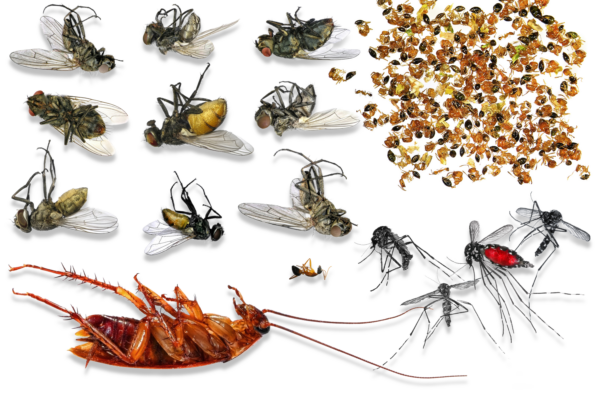
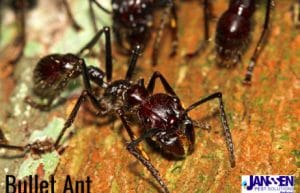 9. Bullet Ant
9. Bullet Ant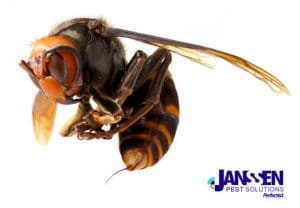 7. Japanese/Asian Giant Hornet
7. Japanese/Asian Giant Hornet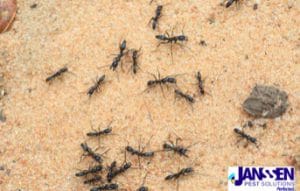 6. Driver Ant
6. Driver Ant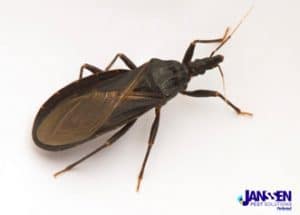 5. Kissing Bug
5. Kissing Bug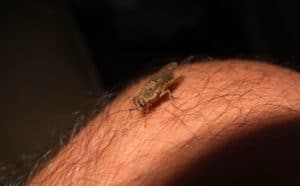 4. Tsetse Fly
4. Tsetse Fly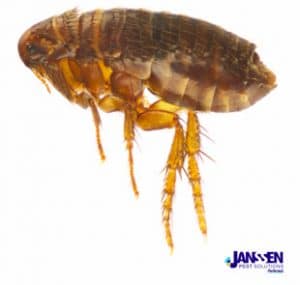 3. Flea
3. Flea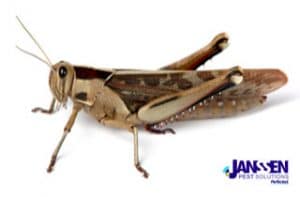 2. Locust/grasshopper
2. Locust/grasshopper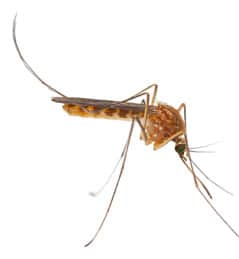 1. Mosquito
1. Mosquito